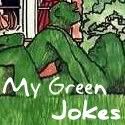THE TURIN SHROUD is probably the most famous religious relic in the world. The cloth measures thirteen-and-ahalf feet long by four-and-a-half feet wide, and clearly depicts the body of a bearded man, said to be Jesus Christ. Its legend states that it was used by Joseph of Arimathea to wrap the body of Christ after his crucifixion. Its first appearance in recorded history came in 1357, in the little village of Lirey in France. It was then taken to Chambéry, in the Savoy region of the country in 1457, and it was there in 1532 that the shroud was almost destroyed in a fierce fire. This experience left charred marks on the corner of the folds in the fabric, and in 1578 it was taken to Turin where it has remained ever since. The Catholic Church is convinced that the shroud genuinely possesses an amazing physical record of Christ’s body, and the cloth is now only shown to the public on rare occasions.
However, organised religion has not always been so accepting. Research has uncovered documents from 1389 written by the Bishop of Troyes and Pope Clement VII. Lirey was in the Bishop’s diocese, and he asked the Pontiff to publicly rule that the shroud was merely a painting. He stated that the image had actually been painted by an artist, originally as decoration, but the priests in Lirey had started duping the local public into believing it was Christ’s authentic death shroud. The Pope’s conclusion bowed to the Bishop’s wishes, but was hardly resolute. He declared that the shroud could keep being exhibited, but each time it was shown, the local priest had to announce to the assembled public that the relic only depicted a painted copy of Christ’s real cloth.
Over the years such practices fell away, and authenticity of the shroud was assumed. The early days of the enlightened age of science seemed to corroborate this belief. In 1898 photographic experts revealed the image was actually a negative picture, and seen in reverse tones, the outline showed a much more detailed view of the body. By 1901, Dr Paul Vignon produced a theory that such a phenomenon was caused by ammonia emanating from Christ’s dead body after his terrible death. Vignon believed the resulting image was therefore beyond the ability of any forger, and must have been authentic. But that is not the view of more modern appraisals, and in 1979 Dr Walter McCrone conducted a series of advanced scientific tests on samples of the shroud. Using microscopic and microchemical forensic techniques, McCrone and his associates discovered particles of red ochre and vermilion pigment mixed with a tempera medium. No blood was found on the cloth. Tempera was a substance widely used by medieval painters, and recent theories suggest that the original light yellow paint has turned dark brown over the centuries. Similarly, the background cloth has actually faded to a paler hue, thus causing the strange negative image effect, misunderstood by earlier researchers.
The most famous and conclusive recent tests involved radiocarbon dating of the shroud. In 1988, laboratories in America, Switzerland and England performed examinations on sections of the cloth. All three concluded the material was produced between AD 1260 and 1390, thereby fitting in with the historical recorded period of the picture’s production. There is also common sense evidence against the shroud’s authenticity. Firstly, the Greek New Testament itself claims Christ was actually wrapped in strips of linen, not a whole sheet. We also have no idea of the provenance of the shroud before the fourteenth century. Finally, the image on the shroud has quite obviously faded and damaged over the last few centuries, whilst it has been in the care of the Catholic Church, although when it was first viewed, witnesses stated that the picture was bright and vibrant.
Despite these questions surrounding the shroud, some investigators continue to search for proof of its authenticity. One recent theory states the samples taken for carbon dating were contaminated by fungi and bacteria that had grown in the cloth over the centuries. This idea is also used as an explanation for some dressings on Egyptian mummies that have been carbon dated at an age many hundreds of years later than the remains they cover. But most of the scientific community is convinced that by combining and corroborating the evidence, the Turin Shroud is simply a medieval painting that subsequently assumed mystical beliefs. Even so, it can be confidently claimed that the shroud is the world’s greatest explained mystery.
However, organised religion has not always been so accepting. Research has uncovered documents from 1389 written by the Bishop of Troyes and Pope Clement VII. Lirey was in the Bishop’s diocese, and he asked the Pontiff to publicly rule that the shroud was merely a painting. He stated that the image had actually been painted by an artist, originally as decoration, but the priests in Lirey had started duping the local public into believing it was Christ’s authentic death shroud. The Pope’s conclusion bowed to the Bishop’s wishes, but was hardly resolute. He declared that the shroud could keep being exhibited, but each time it was shown, the local priest had to announce to the assembled public that the relic only depicted a painted copy of Christ’s real cloth.
Over the years such practices fell away, and authenticity of the shroud was assumed. The early days of the enlightened age of science seemed to corroborate this belief. In 1898 photographic experts revealed the image was actually a negative picture, and seen in reverse tones, the outline showed a much more detailed view of the body. By 1901, Dr Paul Vignon produced a theory that such a phenomenon was caused by ammonia emanating from Christ’s dead body after his terrible death. Vignon believed the resulting image was therefore beyond the ability of any forger, and must have been authentic. But that is not the view of more modern appraisals, and in 1979 Dr Walter McCrone conducted a series of advanced scientific tests on samples of the shroud. Using microscopic and microchemical forensic techniques, McCrone and his associates discovered particles of red ochre and vermilion pigment mixed with a tempera medium. No blood was found on the cloth. Tempera was a substance widely used by medieval painters, and recent theories suggest that the original light yellow paint has turned dark brown over the centuries. Similarly, the background cloth has actually faded to a paler hue, thus causing the strange negative image effect, misunderstood by earlier researchers.
The most famous and conclusive recent tests involved radiocarbon dating of the shroud. In 1988, laboratories in America, Switzerland and England performed examinations on sections of the cloth. All three concluded the material was produced between AD 1260 and 1390, thereby fitting in with the historical recorded period of the picture’s production. There is also common sense evidence against the shroud’s authenticity. Firstly, the Greek New Testament itself claims Christ was actually wrapped in strips of linen, not a whole sheet. We also have no idea of the provenance of the shroud before the fourteenth century. Finally, the image on the shroud has quite obviously faded and damaged over the last few centuries, whilst it has been in the care of the Catholic Church, although when it was first viewed, witnesses stated that the picture was bright and vibrant.
Despite these questions surrounding the shroud, some investigators continue to search for proof of its authenticity. One recent theory states the samples taken for carbon dating were contaminated by fungi and bacteria that had grown in the cloth over the centuries. This idea is also used as an explanation for some dressings on Egyptian mummies that have been carbon dated at an age many hundreds of years later than the remains they cover. But most of the scientific community is convinced that by combining and corroborating the evidence, the Turin Shroud is simply a medieval painting that subsequently assumed mystical beliefs. Even so, it can be confidently claimed that the shroud is the world’s greatest explained mystery.




 Mystery RSS Feed
Mystery RSS Feed








No comments:
Post a Comment